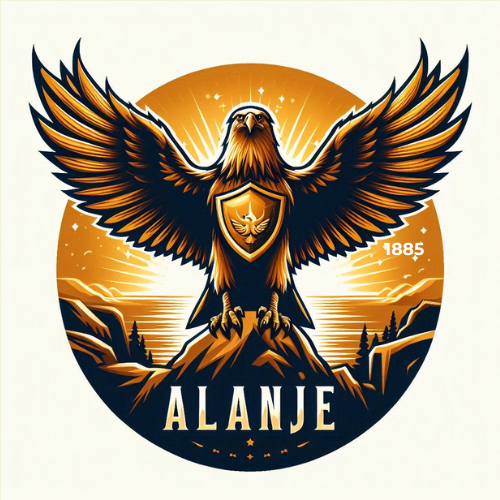Working With OLSP System API: Troubleshooting And Best Practices
 Introduction
Introduction
In today’s digital age, One Lead System Pixel (OLSP) play a pivotal role in various industries, delivering a wide array of services and solutions. To enhance the efficiency and effectiveness of these services, many OLSPs offer APIs (Application Programming Interfaces) that allow developers to integrate their systems with the OLSP platform. However, API integration is not without its challenges. In this blog post, we will explore the OLSP System API landscape, the importance of API integration, and provide best practices for smooth integration and troubleshooting common issues.
Check out our OLSP website here: https://olsprockswithalanje.com
Understanding the OLSP System API Landscape
1. Understanding the OLSP System API Landscape
Wayne Crowe´s OLSP System APIs provide a bridge between your applications and the OLSP’s infrastructure, enabling seamless communication and data exchange. These APIs come in various forms, including RESTful, SOAP, GraphQL, and more, depending on the OLSP’s offerings.
Check out our OLSP website here: https://olsprockswithalanje.com
2. Importance of API Integration in Modern Service Delivery
API integration is crucial for modern service delivery. It allows businesses to streamline operations, enhance user experiences, and access a broader ecosystem of services, all of which can lead to improved efficiency and competitiveness.
Check out our OLSP website here: https://olsprockswithalanje.com
3. Overview of Common Challenges in API Usage and Why Troubleshooting is Crucial
API integration can be challenging due to connectivity issues, rate limits, data format discrepancies, and more. Troubleshooting is vital to maintain the reliability and performance of your applications.
Check out our OLSP website here: https://olsprockswithalanje.com
Best Practices for Smooth OLSP System API Integration and Maintenance
4. Ensuring Thorough API Documentation Review and Understanding
Thoroughly review and understand the OLSP System API documentation to grasp the available endpoints, request parameters, and expected responses. Clear documentation is your roadmap to successful integration.
Check out our OLSP website here: https://olsprockswithalanje.com
5. Implementing Robust Error Handling and Logging Practices
Develop a robust error handling mechanism to gracefully handle unexpected errors and failures. Implement comprehensive logging to track API interactions and diagnose issues effectively.
Check out our OLSP website here: https://olsprockswithalanje.com
6. The Role of API Versioning and Maintaining Backward Compatibility
APIs evolve over time. Employ versioning practices to ensure that changes do not break existing integrations. Maintaining backward compatibility is essential to avoid disruptions.
Check out our OLSP website here: https://olsprockswithalanje.com
7. Implementing Regular API Health Checks and Monitoring
Regularly monitor the health and performance of the OLSP System API. Use tools like monitoring services and alerts to detect issues promptly and prevent downtime.
Check out our OLSP website here: https://olsprockswithalanje.com
8. Secure API Best Practices to Protect Data Integrity and Privacy
Security is paramount. Implement authentication, authorization, and encryption mechanisms to safeguard data and ensure compliance with privacy regulations.
Check out our OLSP website here: https://olsprockswithalanje.com
Troubleshooting Common OLSP System API Issues
9. Identifying and Resolving Common Connectivity Problems
Address common connectivity issues such as network problems, DNS resolution, and firewall configurations. Ensure that your applications can consistently connect to the OLSP System API.
Check out our OLSP website here: https://olsprockswithalanje.com
10. Dealing with API Rate Limits and Service Disruptions
Understand rate limits imposed by the OLSP and implement rate limiting strategies in your applications to prevent exceeding these limits. Prepare for service disruptions by implementing retry mechanisms.
Check out our OLSP website here: https://olsprockswithalanje.com
11. Debugging and Addressing Data Format and Validation Errors
Data format and validation errors can occur during API integration. Debugging these issues involves verifying data formats and adhering to the OLSP’s data validation rules.
Check out our OLSP website here: https://olsprockswithalanje.com
12. Tips for Effective Use of Support Channels and Community Forums
When facing challenges, utilize support channels provided by the OLSP and seek assistance from developer community forums. Collaborating with others who have encountered similar issues can be invaluable.
Check out our OLSP website here: https://olsprockswithalanje.com
13. Leveraging Analytics to Improve API Performance Over Time
Analyze API usage data to identify bottlenecks, optimize performance, and plan for scalability. Regularly review and update your integration to take advantage of new features and enhancements.
Check out our OLSP website here: https://olsprockswithalanje.com
Conclusion
Working with OLSP System APIs offers tremendous potential for improving service delivery, but it also comes with its set of challenges. By following best practices for integration and troubleshooting, you can ensure that your applications communicate seamlessly with the OLSP platform. Remember that the key to successful integration is ongoing monitoring, maintenance, and a commitment to delivering the best possible experience to your users. With the right approach, you can unlock the full potential of OLSP System APIs and stay ahead in the competitive landscape.
If you would like to sign up for OLSP using our affiliate link you can do so HERE.

+ There are no comments
Add yours